While pilots, cabin crew and their aircraft may be grounded, a group of professionals continue to work every hour of every day. Air Traffic Controllers provide a critical service and, unlike aircraft, must operate as normal, ensuring the safe and efficient flow of aircraft.
There’s a reason Lauren Clarkson-Dodd loves her job as an Air Traffic Controller, the sheer excitement of keeping traffic flowing “safely but expeditiously”.
At the top of the Perth control tower (the highest in Australia) Lauren directs aircraft on the ground and on the runways. Each day dozens of mining charter flights depart and arrive at Perth, making it one of Australia’s busiest airports during COVID-19.
We sat down with Lauren to learn more about her job as a Tower Controller:
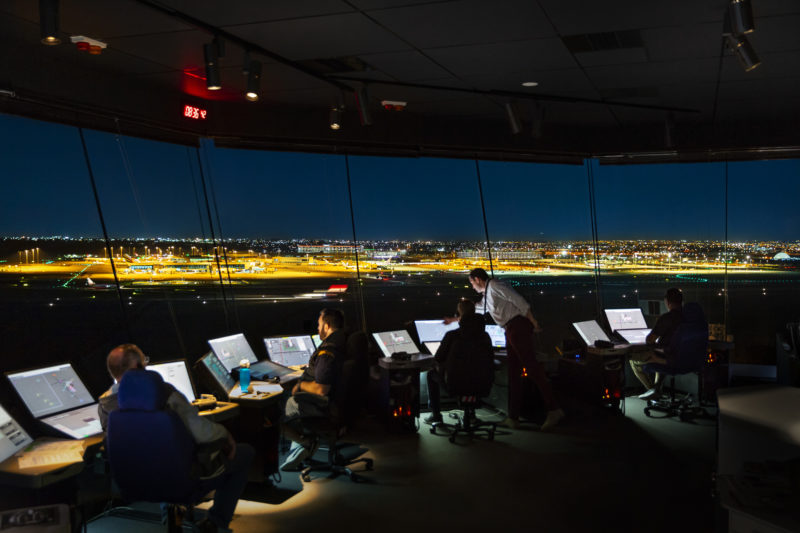
What are the different roles performed in the tower?
- The Ground Controller, or SMC, is responsible for safely taxiing aircraft throughout Perth’s sprawling network of taxiways and aprons. This position is often the busiest, due to the large scope of work conducted. Importantly, junior ATCs initially work on Clearance Delivery and Ground only; until they have enough experience to gain a tower endorsement (usually 12-18 months)
- The Tower Controller (Aerodrome Controller) is in charge of the runways, as well as the airspace within 5 nautical miles of the airport
- Clearance Delivery controllers are responsible for giving aircraft a safe route out of the airport, as well as the relevant frequencies and transponder codes
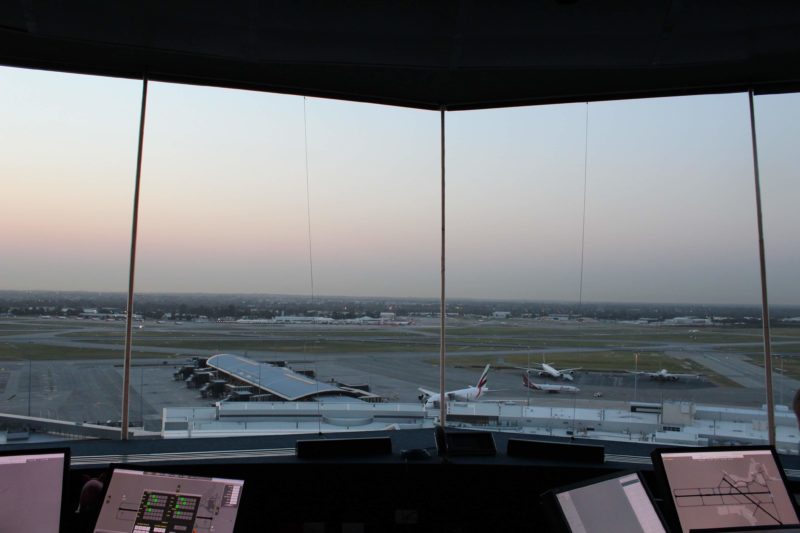
What Does a Day-in-The-Life Look Like For an ATC?
- Firstly, Lauren signs-on for the day. Being a 24/7 job, shifts can start in the morning, afternoon or anytime in between. Being a mother as well as a controller, Lauren enjoys the flexibility of having mornings and weekdays off. Some Perth-based controllers will “go surfing in the morning and control aircraft in the afternoon”
- Before getting started controllers will get a briefing, outlining any special changes to procedures or documentation
- Next, Lauren commences her first rotation. Generally Australian controllers won’t work more than two hours, to ensure that fatigue is managed and appropriate breaks are taken. This morning, Lauren is working the ground position, managing the Perth rush hour
- In accordance with rigorous safety standards Lauren, and her colleagues, go on break for 45-90 minutes, depending on the time of day. During this time they can eat, rest and relax, before heading back upstairs into the tower
- Lauren once again spends 1.5 hours controlling live aircraft. This afternoon she is working the tower position, managing the dozens of afternoon arrivals. Unlike other airports around Australia, Perth is busiest on Tuesday, Wednesday and Thursday (fly-in-fly-out mining changeover day)
- After a rewarding but exhausting day in the tower, Lauren signs-off and heads home. The beauty of being an ATC means that work stays at work, so Lauren doesn’t have to focus on her job at home
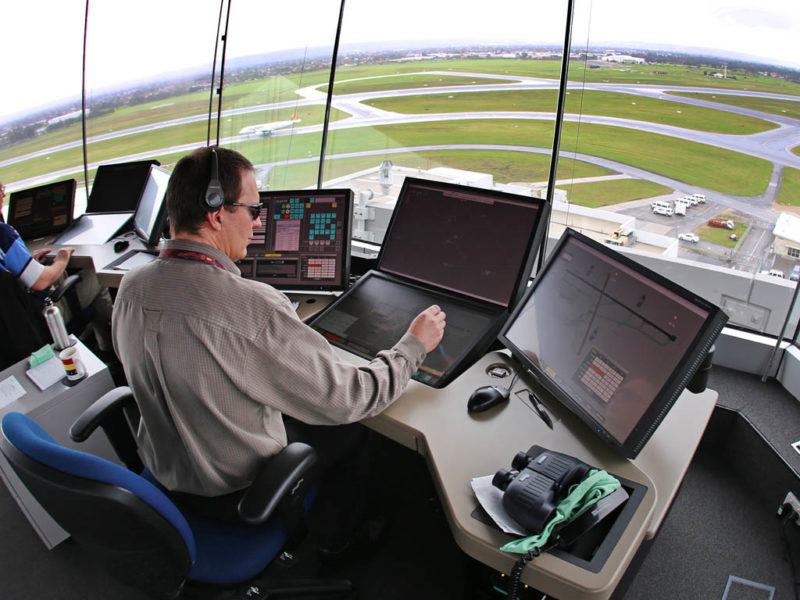
What your favourite aspect of the job?
“The satisfaction of getting everything flowing safely, but expeditiously. Establishing a good flow of on-time arrivals and departures is really rewarding.”
“Being an Air Traffic Controller requires good independence, but I also love the team aspect of the job. I really like the broader Australian aviation industry, so being a part of the flying family is a great part of my job.”
What is The Most Memorable Experience in Your 9-Year-Long Career?
When Lauren was about 18-months into the job, she was on Tower Control duty. One day a Beechcraft Duchess was on final approach, when she realised that the small aircraft’s landing gear was not deployed. In the end, the aircraft landed safely after Lauren promptly reminded the pilot to extend the gear.
Days later she received a letter of thanks from the two pilots of the aircraft, an instructor and his student. This small gesture is a great memory for Lauren.
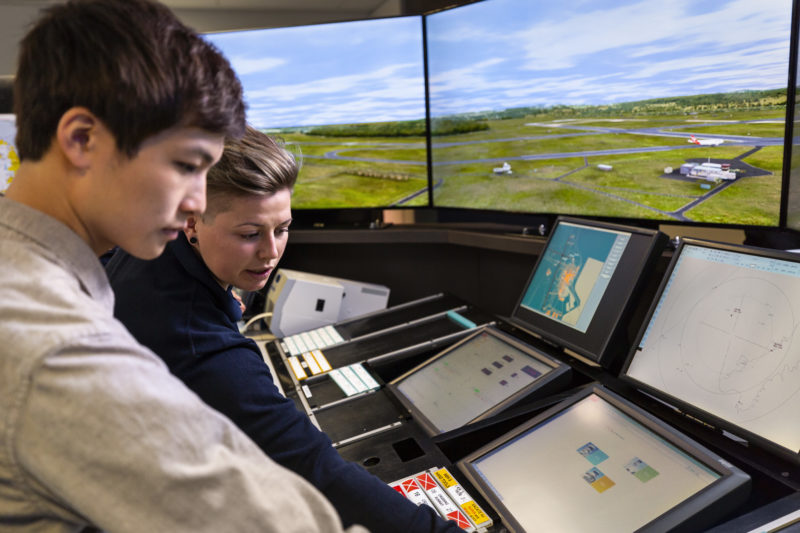
Another fond memory is when the Queen of England was last in Australia, Lauren was on duty in the control tower at the time. Her Majesty came on a British Airways Boeing 777 and, as expected, the entire airport shut-down. Coincidently Lauren’s mum was waiting to depart on a flight of her own, alas Lauren had to create a delay her own family!
What is The Most Challenging Part of Your Job?
Day-to-day, the peaks and troughs of traffic are normal. What would seem to be the most stressful is just standard procedure.
For Lauren, the most challenging component of her job is when abnormal factors come into play. For example, recent taxiway works at Perth Airport meant that some areas of the airport had only one way in and one way out.
Any Advice for Those Considering a Career as an ATC?
“The job is by no means easy, so be prepared to study! Potential Air Traffic Controllers don’t need to be the smartest people ever, rather you’ll need a good sense of spatial awareness and ability to keep calm under pressure.
If you have the ability to work independently and as part of a team, you will love being an Air Traffic Controller.”
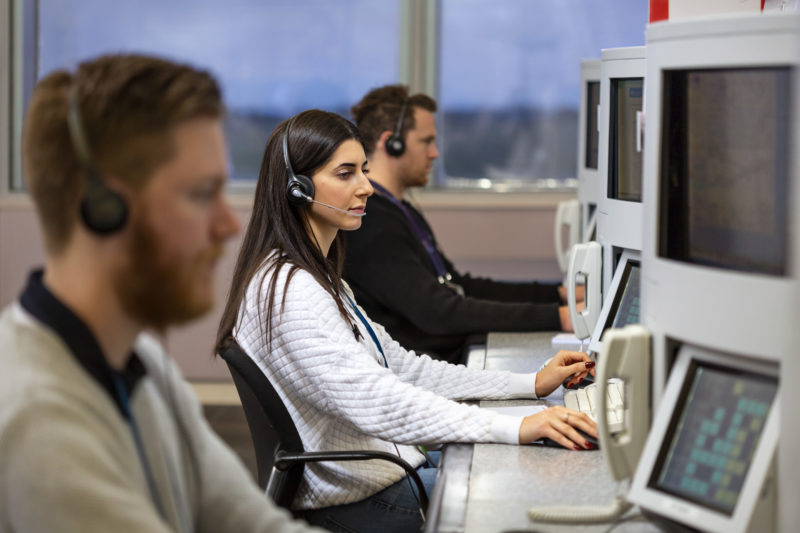
Many People Only See The Tower, But Are There Other Controller Positions?
Yes, there are. In fact, there are three universal controller positions (with some variations).
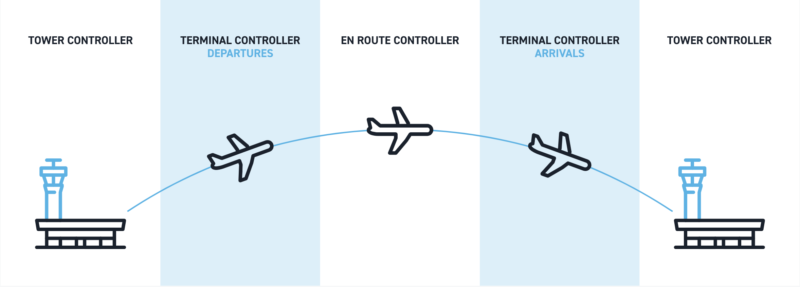
- When aircraft are in the hands of the control tower, they are at the “pointy end” of their journey. Tower Controllers (when working any position) generally rely on visual separation, as opposed to other controllers who use a radar screen in a ground facility
- Terminal Controllers (usually called Approach or Departure Controllers) are responsible for controlling the airspace within a 30-mile radius of the airport. These controllers are responsible for the safe departures and arrivals of aircraft, using a radar screen
- En-Route Controllers are responsible for, as the name suggests, en-route aircraft. Lauren says that these controllers “have more time to make decisions, because they control very large sectors with well-spaced traffic”.




